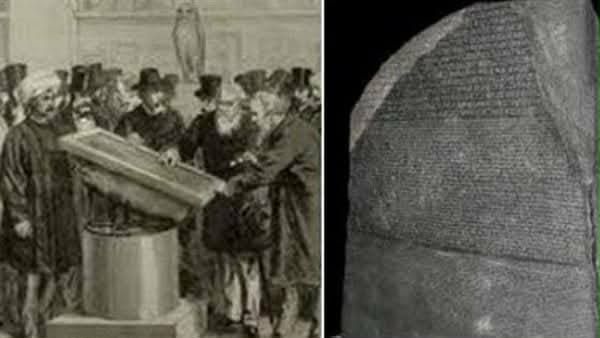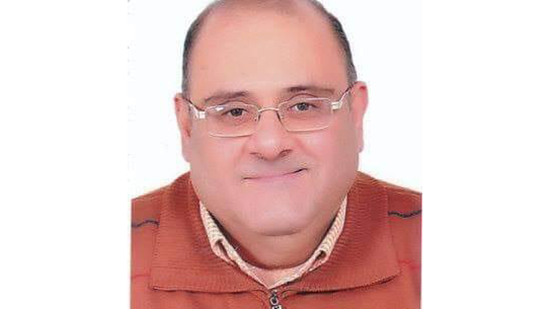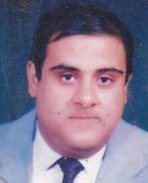Prepared by Magdy Kamel
In September 1822, precisely on the 27th of the month, the French scholar François Champollion announced to the whole world his success in deciphering the hieroglyphic language. Yet, in truth, this success did not come out of nowhere, nor was it solely the result of his own efforts. Rather, he relied on a Coptic priest named Yohanna al-Shaftishi, whom he had met at the Church of Saint Roch in France.
Champollion firmly believed in the importance of the Coptic language, regarding it as the natural development of the hieroglyphic language. For this reason, he deeply loved the Coptic tongue. He recorded this passion in his notes, writing in a letter to his brother:

“I am entirely devoted to the Coptic language. I want my mastery of this language to be as thorough as that of French, because my vast work on Egyptian papyri will be based on it. My Coptic continues to improve, and I find great joy in practicing it. You can imagine that the happiness of conversing in the language of Amenophis, Ramses, and Thutmose cannot be small. As for Coptic, I do nothing else. I dream only in Coptic, I compose nothing else. I have written a grammar of the Theban–Sahidic dialect; I have authored a book on the Memphitic dialect, comparing the two. I have also translated Sahidic grammar into Arabic from Coptic texts; I have copied manuscripts; I compiled the vocabulary of the letter A in a Sahidic dictionary, and I have completed seven letters of a Memphitic dictionary based on word roots. I have become so immersed in Coptic that I amuse myself by translating whatever comes to mind into Coptic. I even converse with myself in it, for this is the only way that pure Egyptian will truly enter my mind. Then I will attack the papyri, and by virtue of my heroic resolve, I hope to master them. I have taken a great step. I personally consider Coptic the most perfect and most rational of all known languages.”
(For more detail, see: Jean Lacouture, Champollion: A Life in Light, trans. and annotated by Nabil Saad, The National Translation Project, Supreme Council of Culture, Book No. 164, 1st ed., 2000, pp. 182–183).
The book Champollion… Le Grand: Steps on Egyptian Soil by Zahi Hawass and others notes that Champollion was able to recognize the similarities between the Coptic language and hieroglyphic writing. For example, when he realized that the hieroglyphic word “mes” meant “to be born,” and that this word appeared frequently in royal cartouches. He also saw that the sun sign corresponded in Coptic to “Ra,” while “child” in Coptic was “mise.” Thus, by combining the two signs, he understood that the name Ramses, which appeared in the Greek text, was read in hieroglyphics as “Ra-messu.” Similarly, in the cartouche of King Thutmose, he identified the ibis bird as representing Thoth, the god of wisdom, and therefore understood the name as “Thoth-mes.”
(For further details, see the same book, p. 16).
Champollion’s first introduction to Coptic came through his teacher of Arabic, Dom Raphael de Monachis (1759–1831), who was a professor of Arabic and Coptic at the School of Oriental Languages in Paris. Champollion notes in his memoirs that Dom Raphael rendered him a great service by introducing him to a Coptic priest from Egypt who had arrived in 1802—Yohanna al-Shaftishi (likely the French rendering of “John al-Shaftishi”), pastor of the Church of Saint Roch. Through him, Champollion was able to practice speaking Coptic, which appeared to both of them to be the key that would unlock research into ancient Egyptian writing (see the same reference, p. 158).
Champollion expressed his admiration for Coptic in a letter to his brother Jacques-Joseph dated April 21, 1809:
“My Coptic is continuing smoothly, and I indeed find great joy in it. You know well that happiness cannot be small when I speak the language of my beloved Amenophis III, Ramses, and Thutmose.”
(same reference, p. 407).
A French newspaper reported that Monsieur Champollion was to give a lecture on the forms of writing in ancient Egypt, in which he would explain the relation and similarity between Coptic and the language of the ancient Egyptians. The lectures were scheduled for Tuesdays, Thursdays, and Saturdays starting from May 10, 1831, at 8:00 a.m. (same reference, p. 616).
A full coverage of the lecture in Le Temps noted that the coming sessions would be dedicated to grammar and the relationship between Coptic and ancient Egyptian (same reference, p. 617).
Returning to Yohanna al-Shaftishi, the Coptic priest: he was the unsung hero behind this astonishing discovery. A little-known fact about him was mentioned by the Reverend Dr. Basilius Sobhy in a lecture delivered at the servants’ meeting in the Church of the Virgin Mary in Zeitoun. He explained that al-Shaftishi had been ordained as a priest in the Church of the Virgin al-Moghitha in Haret al-Rum. He came from a long clerical family: his father, Father Rizqallah, was also a priest in the same church, and his brother, Father Girgis, likewise served as a priest there. (The lecture is available in full on YouTube.) Rev. Basilius Sobhy noted that his source was the eminent historian Nabil Kamel Dawood (1937–2010), who had discovered an unknown manuscript preserved in the manuscript library of the Church of the Virgin al-Moghitha in Haret al-Rum. Perhaps researchers who have studied these manuscripts can further clarify the authenticity of this finding.
A pioneering study by Dr. Anwar Louqa (1927–2003) shed further light. Importantly, Dr. Louqa returned to original sources, including the “Egyptian Refugee Documents” preserved in the archives of the Ministry of War at Vincennes. There, he found a rare file on Yohanna al-Shaftishi containing highly valuable information.
According to Louqa, the surname al-Shaftishi was used by goldsmiths to refer to engraved threads, suggesting that this priest likely belonged to a family of goldsmiths (as goldsmithing was a traditional Coptic craft from ancient times).
The documents record nine papers concerning “Hanna al-Shaftishi,” a Coptic refugee born in Cairo. They testify that he worked as an interpreter in the Giza district and as chief clerk at the Commercial Court. He also served as translator for some officers of the French campaign in Egypt. On the recommendation of the scholar Joseph Fourier (1768–1830), he worked as interpreter for General Kléber in compiling materials on the history of the French campaign. Louqa notes that he applied for French citizenship, supported by a petition signed by seven senior members of the campaign. (For more details on the scholars of the French campaign, see Robert Solé, Les Savants de Bonaparte en Égypte, trans. Fatima Abdullah Mahmoud, reviewed by Mahmoud Maher Taha, introduction by Anis Mansour, General Egyptian Book Organization, Egyptian Studies series, Book No. 8). These scholars praised Yohanna’s vast knowledge and culture, as well as his asceticism—he even gave up half of his salary to support the widows of his two brothers and their six children (see Anwar Louqa, pp. 279–280).
Among the documents in Yohanna’s file was a commendation from the director of the School of Oriental Languages in Paris, praising this Coptic priest “Yohann” and recommending that his knowledge be used to enrich French literature with Arab writings about Egypt’s antiquities and geography (see Louqa, p. 279). Another letter from the French Minister of the Interior to a professor at the Oriental School of Languages asked for his opinion on the usefulness of employing a Coptic priest named Yohanna, reputed to be well-versed in Oriental languages, in the compilation of the monumental Description de l’Égypte.
In France, Yohanna served at Saint Roch Street in Paris, where the young Champollion sought him out for private Coptic lessons, as mentioned earlier. He ministered to Coptic migrants who had settled in Paris. In 1825, he left Paris for Marseilles in search of a warmer climate more suited to his health, and there he remained until his death. Unfortunately, the exact date of his death is unknown.
It is worth noting that the German Jesuit Athanasius Kircher (1602–1680) had earlier recognized the connection between hieroglyphics and Coptic and had worked hard to uncover this link, though his efforts ultimately failed. Likewise, the French Orientalist Étienne Quatremère (1782–1857) published in 1808 a book titled Critical and Historical Research on the Language and Literature of Egypt, in which he asserted that the ancient Egyptian language must be sought in Coptic.
⸻
References
1. Jean Lacouture, Champollion: A Life in Light, trans. and annotated by Nabil Saad, National Translation Project, Supreme Council of Culture, Book No. 164 (pp. 158; 182–183; 407; 616–617).
2. Robert Solé, Egypt: A French Passion, trans. Latif Farag, General Egyptian Book Organization, Family Library, 1999, p. 82.
3. Anwar Louqa, Yohanna al-Shaftishi: Champollion’s Teacher, Coptic Heritage Encyclopedia, Vol. 1, pp. 277–282.
4. Rev. Athanasius al-Maqari, Index of the Writings of the Fathers of the Church of Alexandria, Vol. 2, Church Liturgy Sources, 1st ed., Jan. 2012, p. 942.
5. Fr. Basilius Sobhy, Lecture on Yohanna al-Shaftishi, delivered at the general service meeting in the Church of the Virgin Mary, Zeitoun, Sept. 14, 2018.
6. Dr. Yohanna Nessim Youssef, Introduction to Coptic Studies, No. 1, Oct. 2013, Coptic Notebooks series, p. 9.
7. Zahi Hawass et al., Champollion… Le Grand: Steps on Egyptian Soil, Supreme Council of Antiquities, pp. 16, 21–22.










